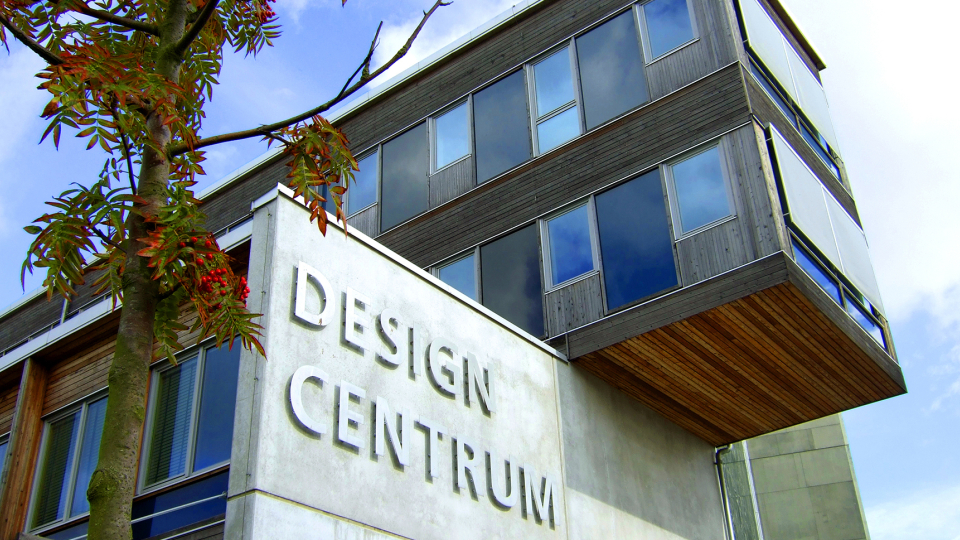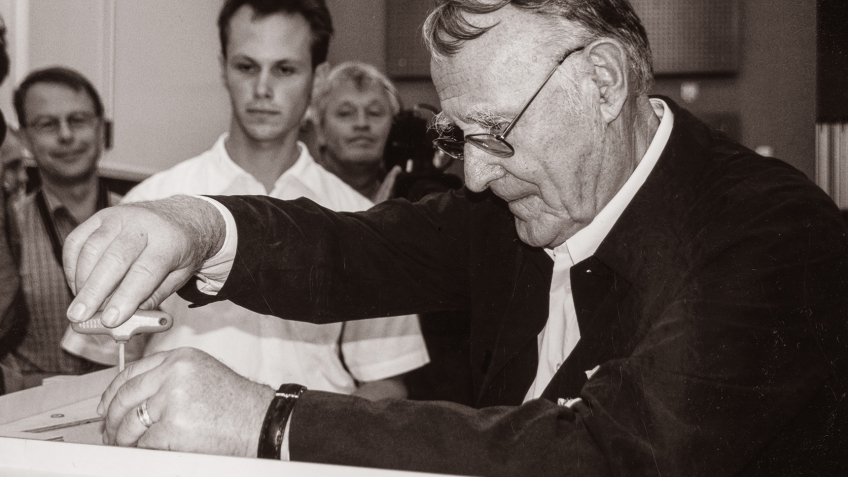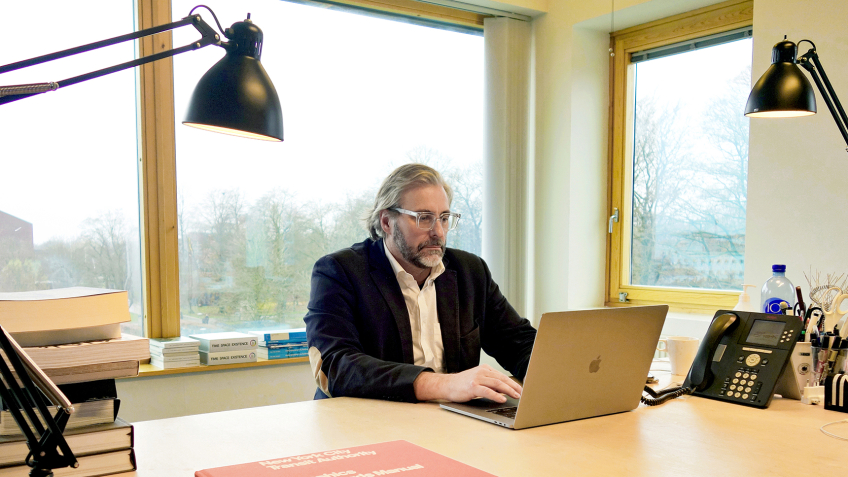Ingvar Kamprad Design Center celebrates its 20th anniversary
A meeting at the kitchen table, with lots of coffee and snus. And a donation of SEK 250 million. That’s what happened when Ingvar Kamprad met LTH’s dean in 1998 to talk about the future of industrial design education at the University.
Jessika Sellergren – Published 19 December 2022

The kitchen table belonged to the then dean of LTH Thomas Johannesson, who had invited the founder of IKEA to his house to discuss a collaboration between the design programme and industry. The dean and Ingvar Kamprad agreed that good design should be accessible to as many people as possible, which led to the Kamprad Foundation’s donation to the programme.
Part of the donation made it possible to build the Ingvar Kamprad Design Center, known as IKDC. The building was finished in 2002, the same year in which Claus-Christain Eckhardt became the director of the School of Industrial Design. His office in located in one of the bird boxes that jut out from the building and appear to hang in mid-air.
"A feeling of freedom"
The architect, Gunilla Svensson, imagined the overhanging elements as giving the building a feeling of freedom. She says:
“These overhangs facing different directions were an important part of the feeling of freedom, but I also wanted the architecture as a whole to signal transparency and a permissive posture. The building should not be authoritarian and restrictive. My hope was that the building would inspire collaboration and creativity through the different spatial solutions.”
Discussion about growing potatoes
Over the years, Ingvar Kamprad followed the development of the programme closely and visited the building named after him several times. When Claus-Christian Eckhardt met him for the first time, they discussed growing potatoes.
“My impression of him was someone with a genuine interest in people’s everyday lives. Our conversations were down to earth, we often talked about things like growing potatoes.”

Ingvar Kamprad attended the opening of IKDC, during which he screwed together a wooden model of the Center with the classic Allen key. Photo: LUM
Although their primary topic was, of course, the programme in industrial design and how it could be developed with help of the donation.
“We had a shared view of how design can impact society. That design is more than products, it is about working on social sustainability or political and global challenges. The donation has made it possible for us to deepen these perspectives on our courses,” says Claus-Christian Eckhardt.
That design is more than mere physical objects is noticeable among students on the programme. They are involved in projects on, for example, possible solutions for clean potable water in parts of the world challenged by water scarcity, or how waste products from nature – like the husk of the coconut – can be reused in different ways instead of being thrown away.
Passion and creativity
“Many of our students are passionately engaged and have a strong desire to contribute to making the world better through design,” says Anna Persson, programme director for the Master’s in Industrial Design.
She was a student at the School herself and presented her Master’s thesis in 2006. After graduation, Anna Persson decided to stay on. She describes the School as a place of creative space and freedom where she felt at home.
“The School is a framework, but within that you are given free rein to explore the design process and your own creativity,” she says.
Another donation
Just like Claus-Christian Eckhardt, she has followed the changes at the School over the years. The first donation from the Kamprad Foundation in 1998, alongside another of SEK 350 million in 2018, have made it possible to increase the number of student places from 15 to 30 each year and has helped to strengthen the School’s international character.
And above all, the donations have secured the School’s long-term economic future.
“We are now focusing on the further development of the School as we plan to deepen our partnerships and further strengthen our international presence,” says Claus-Christian Eckhardt.
The article is published in LUM, Lund University magazine 2022:6

Claus-Christian Eckhardt
Claus-Christian Eckhardt came to Lund in 2001 to develop the design programme and is now professor and director of the School of Industrial Design. He was previously chief designer at BOSCH. He graduated from the HBK Braunschweig University of Art in Germany.
School of Industrial design and Design Science
Design projects linked to sustainability and global challenges are a hallmark of the School of Industrial Design. One of its students, Pola Salicka, worked on the project Cocohusk between 2017-2019. The aim was to investigate the relationship between plants, food and materials on coconut plantations in Sumatra in Indonesia, as well as suggest solutions to maximise use of the fibrous husks of coconuts.
Read more about Cocohusk on the School of Industrial Design’s website: Can you see a forest in the palm? : LUSID
IKDC is home to the School of Industrial Design, but also the Department of Design Sciences at the Faculty of Engineering (LTH), which conducts research and education related to the interaction between people, technology and design.
